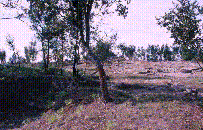
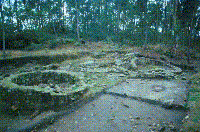
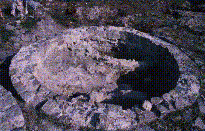
Figs 3.1, 3.2 & 3.3 (l-r): Interior of the castro at Terroso,; Structures in the interior of the castro at Terroso; House structure in the castro at Terroso



Figs 3.1, 3.2 & 3.3 (l-r): Interior of the castro at Terroso,;
Structures in the interior of the castro at Terroso; House structure in the castro at Terroso
The Iron Age archaeology of this area of northern Portugal is best known for its castro sites, the fortified settlement enclosures set in prominent landscape locations (Figs. 3.1-3.3). They have so long attracted archaeological attention that they are often used to characterise the whole region. However, as Manuela Martins (1997) has emphasised, the conventional view of the north-western Iberian peninsula being dominated by a monolithic castro culture' is no longer sustainable. A combination of regional archaeological studies and more broadly based conceptual critiques suggest that there were significant regional and chronological variations in Iron Age settlement patterns. Equally, few would now accept the view that changes in the region were primarily the result of external influences.
In outline it is clear that the pattern of enclosed settlements known as castros has its origins in the late Bronze Age (c. 1000-700/600 BC), although archaeological evidence of this phase is scarce. In this period there was a mixture of open rural sites and enclosed, nucleated hilltop settlements with a rich agricultural base, evidence of economic intensification and craft specialisation. Around the end of this period there was an apparent breakdown in the broader economic networks associated with the exchange of metal artefacts in Atlantic Europe and some impoverishment of settlement sites. This was associated with a period of settlement retrenchment, with open settlements abandoned and an exclusive emphasis on an increased number of hilltop enclosed sites from the 7th century BC onwards. Queiroga's (1992) analysis of calibrated radiocarbon dates supports this conclusion whilst demonstrating a strong pattern of continuity of occupation at the castro sites.

Fig. 3.4. The Largoa Negra gold-mining zone
Castros themselves varied in size, with the majority apparently occupied by only relatively small population groups. Although these sites were surrounded by substantial earthwork and stone enclosure walls, they are likely to have been constructed as much for displaying dominance as for defence. Analysis of their location demonstrates that they were carefully situated to be visible both from the valley floors and from each other (Martins 1990; Strutt 1998; Section 6.4.3). There is evidence for the growth of a settlement hierarchy and the elaboration of castro defences in the last centuries BC. The key to understanding these sites seems to lie in a growth of territoriality and the desire to display control over the agriculturally rich land in the valleys. The slight evidence for external trade contacts in this period (cf. Naveiro López and Pérez Losada 1992, figs 10 and 11), suggests that these developments were as much the product of long-term processes of indigenous change as a result of trade contacts with the Mediterranean or the first Roman expeditions in the 130s BC. The region became known to the Romans as a rich source of metals, but the extent to which these were exploited during the Iron Age is unclear (Queiroga 1992, 59-62). There seems to have been a modest scale of exploitation of tin and gold resources, for example in the gold mining zone of Largoa Negra (Fig. 3.4), most likely maintained by local communities throughout the Iron Age. Control of these metals may in part account for differentiation within the settlement hierarchy and the emphasis on territorial control. Knowledge of the region's metal resources was widespread within the classical world, and this is reflected in the contacts known through the imported artefact distributions. The scale of these distributions does not suggest that they played any major role in stimulating social change.
Military display was clearly important to the social dynamics of the region. The archaeological evidence for this comes primarily from the group of fine warrior statues, which have a distribution almost entirely confined to the area between the rivers Douro and Minho in northern Portugal (Silva 1986, 29192, 30510 Est. IX; cf. Calo Lourido 1993, map p.138). The importance of warrior display is also suggested by finds of various classes of warrior equipment from the same general region (Queiroga 1992, fig. 59). Classical authors also emphasise the war-like and nomadic character of the peoples of this region (Strabo, III, 37; Diodorus Siculus, V, 34), although we should be cautious in accepting their views which, arguably, repeat a stereotype of those who lived in remote and mountainous areas (Shaw 1983; Patterson 1991). As Martins (1997) and Queiroga (1992) have demonstrated, characterising the area as agriculturally poor and backward is certainly not consistent with the archaeological evidence. Nevertheless, the militaristic character of peoples of this region seems to have been important, and it is likely that there was a tradition of mercenary military service elsewhere in the Iberian peninsula throughout the later Iron Age. The prolonged period of warfare brought about by Roman involvement in Iberia from the 3rd to the 1st centuries BC may well have provided opportunities for men from the north-west to develop their warrior roles, although the conventional idea that they were migrant pastoralists should be firmly rejected (Queiroga 1992, 79-104). The social structure of the region therefore seems to have combined a settled agrarian base and long-lived stable territorial centres with a mobile male warrior class. However this was articulated, it enabled society to thrive with a system of remarkable long-term stability.
The armies of Rome came into contact with Lusitanian peoples from the Atlantic littoral of Iberia as early as 194 BC through their raids on areas under Roman domination. Despite such continuing intermittent conflicts, the first Roman military campaigns in this region came with D. Iunius Brutus' expeditions in the wake of the campaigns against Viriatus in 138-36 BC. A further incursion was perhaps effected by M. Perpennia during the Sertorian wars in 74 BC, although the location of this campaign remains unclear. Roman control reached as far north as the Douro as a result of Caesar's campaign of 61 BC, but the region to the north did not finally come under Roman control until Augustus' reign (Alarcão 1988; Richardson 1996). There is no certain evidence for the direct effects of these armies and we cannot be sure of their indirect impact, although contacts with them over a period of more than 100 years may well have contributed to the growth of militaristic traditions in indigenous society.
Given the character of this region in the later Iron Age, with its numerous centralised settlements, one might have predicted a relatively rapid process of assimilation into the Roman world with the growth of a series of towns on or adjacent to castros and the emergence during the Principate of a variety of rural villas in their vicinity. This is the type of pattern familiar elsewhere in the western Empire, which is also found in other parts of the peninsula (Alarcão 1988). However, the area north of the Douro remained different, with a much less developed pattern of Roman-style settlement.
Recent archaeological research in this region confirms this picture, with the development of a remarkably small number of Roman town sites (see Alarcõa 1993). Bracara Augusta (Braga) is an Augustan foundation and developed as a regional centre of communications and administration (Martins and Delgado 1990a; Martins 1990). Its total area was relatively small (c. 40ha) and, although it obtained all the facilities of a Roman provincial town, it never seems to have become as large and dynamic a centre as some towns elsewhere in the Iberian peninsula (AAVV 1993). It did develop to become a conventus centre by the Vespasianic period at the latest. Other towns in this region of northern Portugal were at Chaves (Aquae Flaviae) and Freixo, Marco de Cananases (Tongobriga), both of which appear to have developed in the later 1st century (Alarcõa 1993, 209). At the same time it is clear that a significant number of the castro sites both continued in occupation after the Roman conquest and also developed in character. Many of them were rich in imported Roman goods together with locally manufactured imitations. Some of the larger sites (e.g. Citânia de Sanfins - Silva 1986) show evidence of replanning according to almost Roman ideals. Similarly, at other sites (e.g. Citânia de Briteiros) we see the use of Latin inscriptions for such things as personal names on door lintels of indigenous style houses, betraying a remarkable depth of cultural assimilation (Cardozo 1985, 45). Although this suggests a different pattern of acculturation to that found in other parts of the Empire, there can be no doubt that it was a complex process.
In the countryside there has long been evidence for the growth of rural settlements away from the castros, although the substantial villas found elsewhere in the Iberian peninsula are not known (Gorges 1979). Instead more modest settlements prevail, often known only from finds of tegula and Roman ceramics. The pattern of such settlement development has been traced in the region around Braga by Martins (1990). Here, there were indications of a complex pattern of change with elements of continuity from the Iron Age alongside new types of valley floor settlement that became established during the Roman period, comprising both farmstead sites and small villas. This pattern of settlement is reminiscent of the structure of mixed hilltop and valley bottom settlement which typified the earlier Bronze Age and, arguably, reflects a long-term process of settlement de-nucleation as much as being a product of the pax Romana.
Little systematic synthesis has been done, but there is a general impression that the occupation of the castro sites tended to decline during the Roman period.
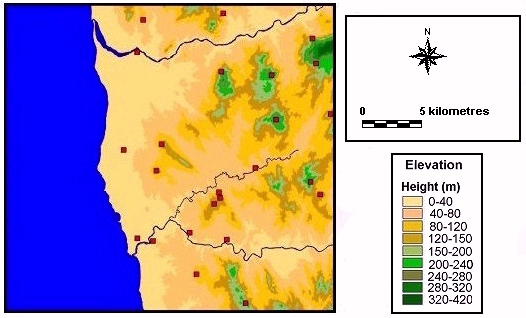
Fig 3.5. Distribution map of castro sites in the study area.
Before our survey commenced, a considerable effort had already been expended by a variety of scholars drawing together the results of previous fieldwork. Their work is summarised in Figures 3.5 and 3.6 and the accompanying database, which provides a brief summary of the available information derived from the catalogues produced by Silva (1986), Alarcão (1988), Martins (1990) and Queiroga (1992).
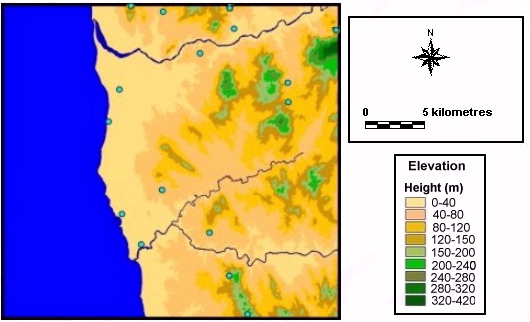
Fig 3.6. Distribution map of Roman period settlement sites in the study
area known prior to the survey.
The catalogue of known archaeological material comprises 61 records with known locations. Of these, 24 represent castros (Fig. 3.5), and 16 mark potential open settlements, probably of Augustan or later date (Fig. 3.6). Other records include cemetery and burial sites, isolated finds, altars and milestones.
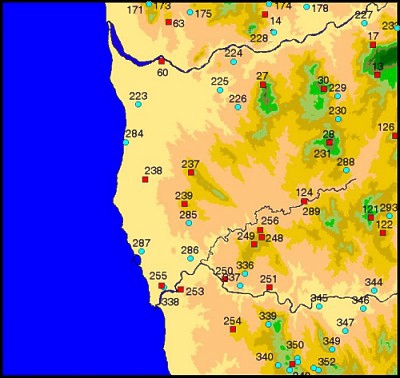
Map 1: Map of known settlements prior to survey
Select site to retrieve database entry
Red square = Castro (nos. taken from Queiroga 1992); blue circle = Other site (nos. taken from Alarcão 1988)
It is important to appreciate that the information in the database summarises knowledge accumulated gradually over a long period through a combination of accidental discoveries and phases of more systematic archaeological work. The study of settlement patterns across the region using these data thus presents a number of difficulties (Queiroga 1992, 35). Despite the recent increase in regional studies, much of the available information remains of a relatively poor quality. Thus, the extent of particular settlement sites has rarely been established, the existence of defences is not always certain and the scale of defensive enclosures is only recorded in the handful of cases catalogued by Martins (1990). Similarly, the chronology of sites is generally poorly understood. Radiocarbon dates from sealed deposits were available for only two of the castro sites, and the stratigraphic phasing of settlement within others has rarely been achieved. The suggested late Bronze Age date for the initial settlement on castro sites is largely based on the uncertain evidence of the chronology of bronze finds found on the surface of castros such as Monte de Saia (Martins 1990). Hence, although a basic chronological framework for settlement development has been obtained, its limitations are evident.
© Internet Archaeology
URL: http://intarch.ac.uk/journal/issue9/millett/prev.html
Last updated: Sat Dec 30 2000